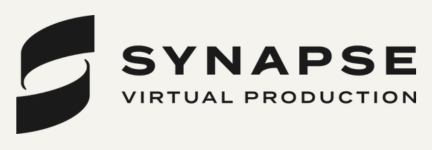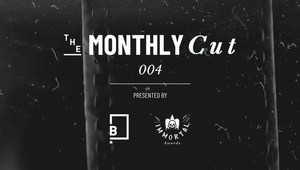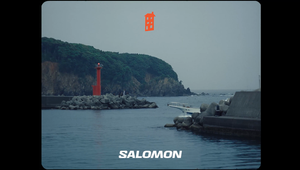
Editing Internationally “Makes Any Editor a Far Better Content Creator”

Editing has always been collaborative, but in an industry where teams are increasingly spread across different countries, time zones, and workflows, the process of cutting a project together is evolving fast.
From navigating remote feedback to syncing up with teams working in entirely different post-production ecosystems, editing internationally comes with challenges – but perhaps unexpected advantages, too.
Stitch owner Leo King says that post-pandemic, remote editing over Zoom has become “totally standard”, coupled with hybrid jobs that see editors fly out for part of a project before finishing remotely. “It’s not only more cost-effective but also makes it easier to work with teams from all over.”
Jane Dilworth, founder and executive producer at WORK UK, agrees, sharing that the technological leap of remote editing platforms and cloud servers has made international work “really great”, enabling people to share files and feedback – and generally collaborate effectively – with anyone, anywhere. “Of course,” she adds, “a great production team really helps to suss out the time zones, coordinate the teams, and make it all run smoothly.”
Working Globally Opens Minds
For Bobby Beardwell, lead motion graphic designer at Bright Blue Day (bbd), working internationally has become a joy. “Put simply,” he says, “working internationally is an absolute pleasure. You have the opportunity to engage with different thoughts, feelings and perspectives. This naturally opens up so many new exciting creative possibilities as your exposure to different creative people and work widens - but more importantly, it makes any editor a far better content creator.”
This happens, he explains, by forcing editors to step back and have an objective view of their work and its intended audience – different communities and cultures with different views. As such, he says that “a degree of empathy and compassion” is essential. Final Cut editor Adriana Legay agrees, saying that more cross-cultural collaboration only strengthens an editor’s work.
“Working globally has taught me to open my mind, not just to different ways of working, but to entirely different perspectives and traditions. You’re not just understanding people, you’re understanding their cultures, and that brings so much richness to the work… That’s when creativity really takes off, when it’s built on understanding, respect and shared energy.”
She recently experienced this herself on a major international campaign, cutting live on set in Barcelona with her assistant Alyce Muhammad, while fellow Final Cut editor Joe Guest worked from London. Adriana wrapped the project remotely from Paris, juggling Zooms between London and the Final Cut team in New York.
“What made this project special wasn’t just the scale – it was the unity,” she adds. “Different cities, different languages, but the same creative pulse. When you combine that kind of cultural richness with trust, speed and shared vision, you get something powerful. We all spoke the same language in the end: storytelling.”
Logistical Challenges and Collaborative Solutions
However, that’s not to say that it’s always plain sailing. “From a logistical point of view, content creation across borders poses some interesting challenges,” says Bobby.
Simon Rodgers, senior editor at Untold Fable, highlights that the challenge of waiting for feedback is exacerbated by working remotely, and that the technical challenges, “particularly in the transfer of rushes”, cannot be underestimated. “Physical delivery via courier can be time-consuming, potentially adding a day to the schedule, and carries the risk of drive failure. Uploading rushes digitally is also a time-intensive process,” he says.
“To mitigate these challenges, it's critical to establish a clear and agreed-upon workflow for everyone involved. Without this, considerable time can be wasted on rectifying errors, such as downloading incorrectly prepared footage.”
The consensus is that a successful international project begins long before the first cut is made. “It’s easily remedied with a bigger focus on the pre-production phase as it requires a shift in delivery timelines, both internally and externally,” says Bobby. “From project file structure to shared online feedback platforms, making sure everyone is on the same page at all times – regardless of where they are around the globe – is the key to success.”
“Honestly, when you have a great team and good material, there are no real hurdles. The process becomes much smoother,” adds Adriana. “What really matters is having the right setup: a solid machine, a reliable remote setup, a producer who truly understands the project, and a sharp assistant. With those pieces in place, editing becomes a joy rather than a challenge. You can focus on the creative process because the foundation is strong. It’s all about the people around you, when the team is great, everything else follows.”
And while the new technological developments have helped with timelines and budgets, Jane concurs that putting the right team together is vital. “It really works best when there are already trusted relationships between directors and creatives,” she says. “We’ve had lots of success in that way with a director in LA, an agency in New York, and an editor in London, or the other way around!”
"Nothing Beats Being in a Room"
However, while Jane believes that a hybrid of both in-person and remote editing “works really well”, she says that “nothing beats being in a room for great creativity to blossom, ideas to bounce off each other, and ending up with a final film that sings.”
Simon notes that in-person editing allows for spontaneous creative exchange and real-time tweaks, which can be lost over Zoom. “The ease of making small, incremental changes and the fluidity of back-and-forth iteration that exist when team members are sitting next to each other are lost in a remote setting. This can lead to a loss of momentum, as the spontaneous exchange of ideas can sometimes be lost when you’re waiting for that email to come back. Gauging people’s reactions to an edit can also be difficult on a Zoom call.”
Leo adds that ‘the upside of editing on set is huge’, as editors can provide instant feedback to the director, creating a “super responsive” workflow with real-time tweaks based on the edit. “The creative flow that comes from in-person collaboration is hard to replicate over Zoom,” he says. “People generally try to avoid spending long hours on virtual calls so they will be broken up throughout the day. You can miss out on the energy that comes from being physically present in an edit suite, sharing coffees and lunches with clients, and engaging in spontaneous creative discussions.”
An Unexpected Upside?
On the other hand, remote working across time zones may have its own advantages, as Leo points out. “I can edit during the day UK time, the clients review it overnight, and I have feedback the next morning.” This is an advantage that Bobby recognises as well. “Knowing that the next day I come into the office, there is a high chance thoughts and feedback will be ready and waiting for me to take action and respond to means the project continues to move forward at a steady pace.”
“Having that time alone with the rushes can be a real advantage of remote work,” agrees Simon. “This distance and time zone separation allow editors to develop a confident initial edit, free from early influence, even when working from a storyboard or brief. This focused time facilitates the development of a unified narrative vision, providing a solid starting point for subsequent collaboration.”
So it’s clear that editing across borders has opened up more than a few opportunities for editors and production teams more widely. Collaborating internationally, be it on set or remotely, has expanded the cultural and creative outlooks for editors, who now bring new perspectives and ideas to the work.
There are, evidently, still challenges; logistical issues, juggling workflows and time zones. But when sufficiently prepared for, it appears that new remote working solutions have made international editing more viable and creatively fulfilling than ever – even if the upsides of the in-person editing experience can’t be truly replicated.















